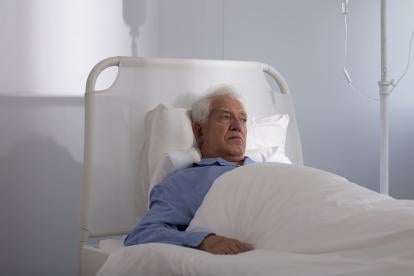News outlets have noted that hospices discharge, on average, 1 in 5 patients alive.
The presumptive and easy explanation, one that fits political assumptions, is profit motive: for profit hospices admit unwitting patients, earn fees, then discharge them alive.
The truth is that assessing when someone will pass away is among the most complex medical determinations. It’s not easy, it’s not an exact science.
The media, and MEDPac also, ignore longstanding JAMA articles that detail in scientific terms the conundrum faced by hospices. Specifically, for non-cancer terminal illnesses, like dementia, heart disease, lung disease, and kidney disease, objective measurements are not available to allow us to fully separate those that will pass away in six months from those that won’t.
The findings present a basic choice: If we wish to provide the option of hospice for even a majority of those that will pass away in the next six months from non-cancer terminal illnesses, then we must set criteria that will in turn allow hospice for perhaps 2 or 3 additional patients who won’t pass away in that same time. If instead we want to admit to hospice only those that will pass away in the next six months, then at most 1 in 10 of the patients that actually will pass away will have a hospice option.
Given that families love hospice and the fact that hospice generally saves CMS money, CMS has chosen not to promulgate National Coverage Determinations specifying tighter (or any) criteria. CMS also declines to pre-authorize hospice; it does not want the political responsibility for denying hospice to most Americans. CMS’ contractors instead are left to promulgate Local Coverage Determinations that speak in relatively vague terms about what hospices should look for in terms of certifying non-cancer patients as eligible.
In turn, CMS knows that some patients will either have to be discharged or kept on care for long periods of time, in some cases across a large population, perhaps for years and years. If hospices keep patients on service too long, they are criticized as profit-seeking and financially punished by the hospice cap.
So, some patients will be discharged. Various local coverage determinations affirmatively require hospices to consider live discharge. Discharge is a sad business. Most patients that face discharge look just like other patients that are being admitted at the same time, just like patients with similar characteristics that pass away “on time.” Discharge means more expensive care, more stress for families, a final insult to our elderly citizens, and accretive damage to the concept of hospice.
So, when hospices now discharge just 1/5 patients alive, in my view, that’s actually a remarkably low number. That’s right, a low number. It’s one that we should work to reduce further too, not by decreasing admissions but rather by promoting a better understanding of the difficulties of predicting life expectancy, and by fully owning the difficult end-of-life care alternatives.



 />i
/>i

